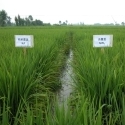19 Jun 2015
An Introduction to Hainan Province (Coco Island)
Hainan province, also known as the Coco Island and abbreviated as Qiong, is the second largest island in China only after Taiwan, and whose capital is Haikou city. Hainan covers more than two million sq. km in area including 34,000 sq. km of land and has a population of 9.03 million in 2014, of which 1.44 million people are Ni, Miao, and other minorities. To its north is Guangdong province with Qiongzhou channel between them; to its west Beibu Bay separates it from Vietnam; to the east is Hong Kong and Taiwan; the Philippines are to the southeast; and the south sea connects it with Malaysia, Indonesia, and Singapore. Thus Hainan is located in the heart of the Pacific economic zone of Asia.
The island lies in a tropics and has a tropical monsoon climate. The annual average temperature in Hainan province is 22-27 0C and total annual precipitation is 1,000-2600 mm. Extremely hot, or cold, weather is absent on the island because of pleasant, cool winds in summer and warm sunlight in winter. Plants in Hainan flourish with perennial green grass and blooming flowers and the rate of vegetative cover is greater than 50 percent.
Basalt and sea deposits prevail as soil parent materials which have developed into highly weathered laterites. Besides these soils are a band of dry laterite soils which are located along the western coast. All of these soils are light in texture, poor in fertility, and nutrients deficiencies such as phosphorus (P), potassium (K), calcium (Ca), magnesium (Mg), boron (B), and molybdenum (Mo) are the very common problems for crop production. Furthermore, high rainfalls exacerbate nutrient leaching from both the indigenous soil nutrient pool as well as from the added fertilizers. It is no wonder that crops on the island consume higher fertilizer rates to produce the same quantity of agricultural products compared to other parts of China. Therefore, balanced fertilization and the technology of proper fertilizer application becomes extremely important in the area in order to improve the crop quality and yield, and to increase farmers’ income and reduce environment contamination.
Being the production base of tropical crops in China, the main crops in Hainan province are most diverse and include rice, sugarcane, all kinds of tropical fruits including mango, banana, litchi, pineapple and coco, oil plants, vegetables and other economic crops such as rubber plant (No. 1 in China in both planting area and yield), coffee bean, cashew, spiceberry, sisal, pepper and cassava and so on...
In 2012, total fertilizer (nutrient) consumption was 477,000 t, among which N accounted for 138,000 t, P2O5 31,000 t, K2O 75,000 t and compound fertilizers 232,000 t. The N:P2O5:K2O:compound fertilizer ratio was 1:0.22:0.54:1.68, indicating a reasonably balanced fertilizer ratio and wide use of compound fertilizers in the province. The crop sowing area in 2012 was 8546 thousand ha and this gives a fertilizer rate of 558 kg/ha sowing area, one of the highest fertilizer consumers on unit area basis in China. Due to its special subtropical weather conditions with high precipitations (especially high frequency of thunderstorms) resulting in severe nutrient losses, plus various cash crops that require high rates of fertilizers, this imposes special attention to the nutrient management on the Island. Thus, it is crucial to adopt 4R nutrient management practices to reduce nutrient losses and enhance nutrient use efficiency.




